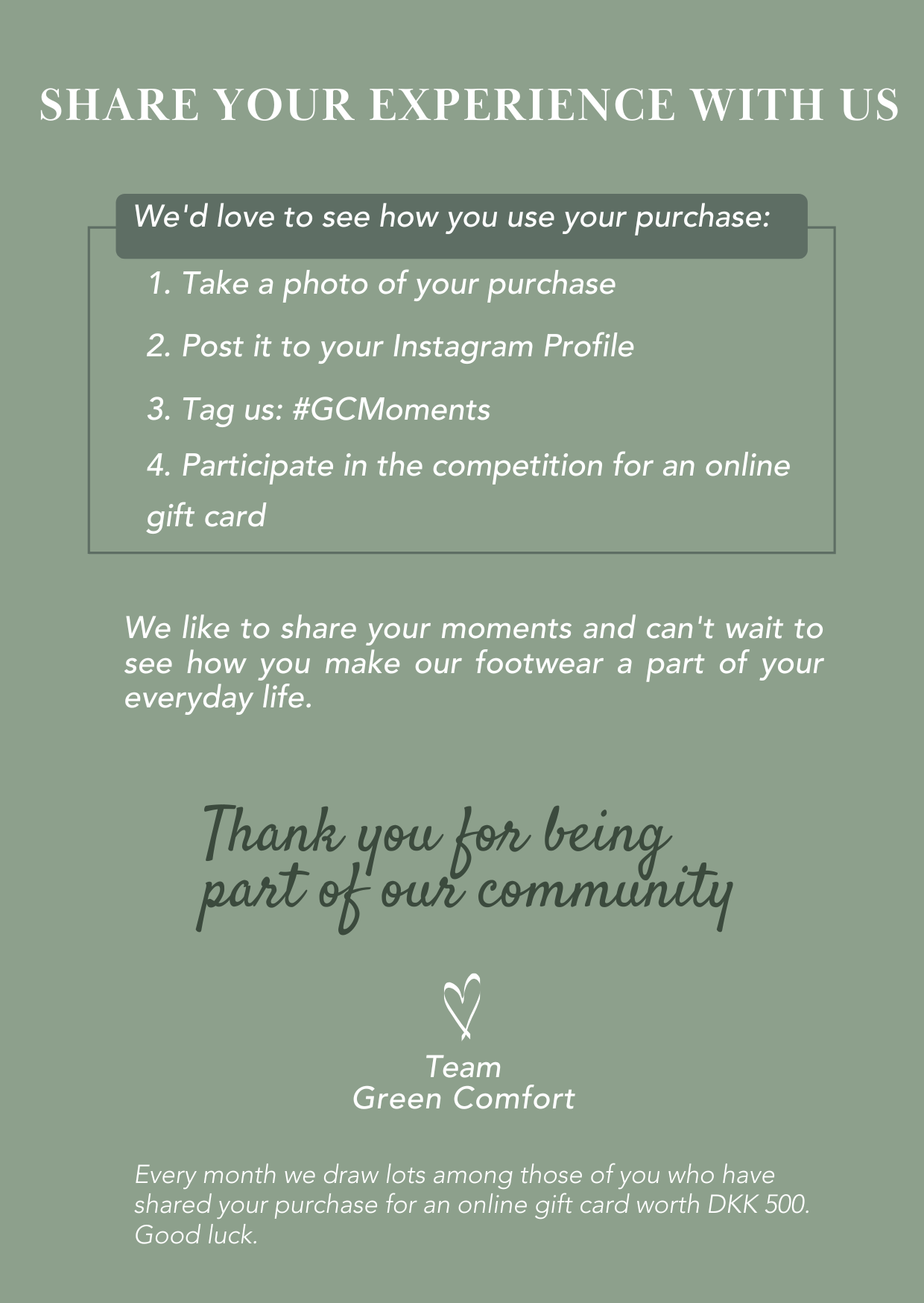Table of Contents
In an era dominated by digital interactions, brands are rediscovering the power of offline UGC to foster deeper connections with audiences.
While social media platforms remain a UGC cornerstone, innovative companies like Green Comfort, TrainMore, and Andrew Martin are bridging the physical-digital gap by turning real-world experiences into opportunities for authentic engagement.
Here’s how these brands are redefining user-generated content beyond the screen.
Offline UGC refers to content that has been generated via an ‘offline’ marketing campaign.
Unlike digital UGC generation (e.g., Instagram hashtags, mentions, tagging, etc.), offline strategies use physical materials that incentivise or encourage direct UGC submissions to the brand.
Here’s why it’s gaining momentum:
UGC highly impacts consumers’ purchasing decisions, but offline-driven UGC often feels more authentic because it’s tied to a real experience.
Green Comfort faced the challenge of encouraging customers to share their experiences post-purchase. Now they include a flyer in every order, inviting customers to tag the brand on social media when showcasing their purchases.
The flyer offers an incentive: an online gift card, which further encourages customer participation.
This strategy taps into the unboxing moment, a highly shareable experience while aligning with the brand’s sustainability ethos. By embedding UGC prompts directly into packaging, Green Comfort transforms passive customers into active advocates.

TrainMore was trying to motivate gym-goers to stay engaged beyond their workouts. They installed digital screens in their gyms that display member-generated photos and videos, from workout milestones to class highlights.
Content is sourced via a branded hashtag and curated to reflect diverse member journeys. Gym-goers are encouraged to share their own moments too.
The screens create a sense of belonging, turning UGC into real-time motivation. Members feel recognised, while newcomers see relatable success stories.
Andrew Martin wanted to streamline UGC collection without relying on social algorithms. They included a QR code on post-purchase flyers, directing customers to upload their very own content that will be featured on their dedicated pages on their website.
The QR code eliminates friction because users don’t need to navigate apps or hashtags. By owning the submission process, Andrew Martin gains control over content for future campaigns. They managed this campaign with Flowbox’s Media Uploader feature.

Offline UGC isn’t about luck. It requires intentional design. Here’s how your brand can get started:
Map moments where customers interact with your brand offline: purchasing, unboxing, using a product, visiting a store, or attending events. For example, Andrew Martin targets the post-purchase moment with QR code flyers, while TrainMore focuses on gym visits.
Make participation effortless (e.g., QR codes, pre-written hashtags, digital business cards) and rewarding (discounts, recognition, exclusivity). Tip: Green Comfort’s flyer includes a clear call-to-action (“Participate in the competition for an online gift card”), which simplifies the ask.
Use offline UGC in email campaigns, social ads, or in-store displays to create a feedback loop. TrainMore’s gym screens, for instance, double as promotional tools for new members.
Track metrics like UGC submission rates, social mentions, and conversion bumps from QR code scans. QR code analytics can show scan-to-submission rates for campaigns like Andrew Martin’s.
While digital user-generated content dominates marketing conversations, offline UGC offers distinct advantages that cut through the noise of crowded social feeds.
Here are some of the many benefits of employing an offline UGC strategy:
Offline UGC thrives on real-world interactions that customers can see, touch, or experience firsthand—like unboxing a Green Comfort order or sweating through a TrainMore class.
These moments create tangible proof points that digital content often lacks. When customers share photos of a product they’ve purchased or a service they’ve used, their authenticity shines through, making their endorsements feel more credible than scripted ads.
For instance, Green Comfort’s package flyers encourage buyers to share their purchases in real life, grounding the brand’s sustainability claims in visible, relatable actions.
Offline UGC captures raw, unfiltered moments that resonate because they mirror everyday experiences. TrainMore’s gym screens, for example, showcase member-generated videos of workouts and milestones.
Its content feels genuine because it’s created by members, for members. This authenticity fosters a deeper connection with the brand, as audiences see themselves reflected in the stories of others.
Unlike polished influencer posts, offline-driven content often feels more accessible, inviting participation rather than passive consumption.
When brands highlight offline UGC in physical spaces like Andrew Martin’s QR code-driven submissions, they signal to customers that they are part of the brand’s story.
This recognition builds a sense of belonging, turning casual buyers into invested community members. Over time, these interactions create a virtuous cycle where customers feel valued, driving repeat purchases and organic advocacy.
Through Flowbox UGC platform, you can manage all of your UGC submissions, whether they are encouraged offline or online. Flowbox provides powerful tools to collect, manage and display UGC across multiple channels.
Flowbox assists you in requesting and managing media rights. We ensure easy management of your pending requests and help you automatically moderate posts once their rights have been granted. This ensures that all the quality UGC that you receive is properly authorised for use in your marketing campaigns.
With Flowbox, you can easily integrate UGC into your website and social media channels. UGC can be automatically gathered from multiple sources and then organised in a central hub called Masterflow. All of the submissions will end up in your Masterflow, ready to distribute into a cross-channel UGC strategy.
Flowbox can help you implement your offline UGC collection campaign to collect authentic customer moments that drive engagement and trust.
Whether you want to incentivise your customers like Green Comfort, showcase their submissions in-store like TrainMore, or give them the opportunity to submit their own images via a QR code like Andrew Martin, book a demo with Flowbox today to start leveraging offline UGC.